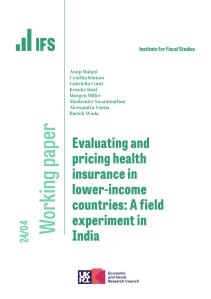We document facts about the US population's medical spending using the Medical Expenditure Panel Survey data set. We find that for the entire population, around 44 per cent of total medical spending is paid by private insurance, but there is a substantial difference by age in terms of financing medical care: for working-age adults (25 to 64 years old), private insurance covers around 57 per cent of total medical spending, whereas for the elderly (aged 65 or over), the largest payer is the government, which covers 65 per cent of the total. Inpatient hospital care accounts for a third of aggregate medical expenditures. Medical spending is highly concentrated: the top 5 per cent of spenders account for more than half of the total. An even higher concentration is observed with hospital spending, where the top 5 per cent of spenders contribute around 80 per cent. The concentration in medical spending decreases with age: the Gini coefficient of total medical spending is 0.75 for people between ages 25 and 64 and 0.63 for people aged 65 or over. We find that the average medical spending of people in the bottom income quintile is higher than that of people in the top income quintile for all age groups. In terms of persistence of medical spending, we find that the correlation of medical expenditure in two consecutive years is 0.36. When persistence is measured by quintile of the medical spending distribution, the medical spending of people in the bottom and top quintiles has higher persistence than that of other groups.








